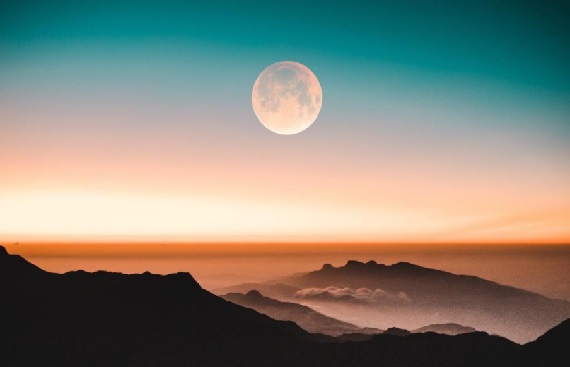Summer Solstice 2022: Soak up the Sun and Celebrate the Longest Day

According to the astronomical definition, the summer solstice marks the first day of summer. Many cultures around the globe glorify the solstice. Earth's the North Pole will tilt closest to the Sun on this day, making it appear at its highest point in the sky. The solstice marks the astronomical beginning of summer in the northern half of the globe. The Southern Hemisphere is the opposite when the June solstice marks the astronomical start of winter when the Sun is at the lowest point in the atmosphere.
The term "solstice" originated from the Latin word solstitium means sol-sun and stitium-still or stopped. Due to the Earth's tilted axis, the Sun doesn't rise and set at the same places on the horizon each morning and evening; it rises and sets positions to move northward or southward in the sky as the Earth revolves around the Sun. Also, the Sun's path in the sky becomes elevated or lower throughout the year. The June solstice is meaningful because the Sun reaches its northernmost point in the sky, at which point the Sun's path does not vary for a concise period.
After the solstice, the Sun emerges to reverse course and head back in the opposing direction. The motion directed here is the apparent course of the Sun when one simultaneously considers its position in the sky each day, for example, at local noon. Over the year, its way forms a sort of flattened figure eight, called an analemma. The Sun is not moving unless you think of its orbit around the Milky Way galaxy. Instead, this shift in position in the sky that we on earth notice is caused by the tilt of the Earth's axis as it orbits the Sun and Earth's elliptical, rather than circular, orbit.
The June solstice doesn't have any particular calendar date or time; it depends on when the Sun moves towards its northernmost point from the celestial equator. Hence, the solstice won't always happen on the same day. Presently, it shifts between June 20, 21, and 22. The summer solstice in the Northern Hemisphere dates from June 20 to 22. This occurs partly because of the difference between the Gregorian calendar system, which usually has 365 days, and the tropical year, which has about 365.242199 days. To reimburse for the missing number of days, the Gregorian calendar adds a leap day back every four years, making the summer date jump backwards. Nevertheless, the date also varies because of other influences, such as the gravitational force from the planets, Moon and the slight wobble in Earth's rotation.
Longest Day of the Year
![]()
On the Summer Solstice day the most extended period of sunlight, Notice how the Sun seems highest in the sky at the solstice; its rays strike Earth at a more direct angle, driving the efficient warming we call summer. Because the Sun is most elevated in the sky on this day, you'll notice that your shadow is the shortest, and it will be all year.
For the people who live in the Southern Hemisphere, this is the shortest day of the year and marks the arrival of winter. Earth's atmosphere, land, and oceans engross part of the incoming energy from the Sun and store it, firing it back as heat at different rates. Water is significantly slower to heat or cool than air or land. The Northern Hemisphere obtains the most energy from the Sun at the summer solstice due to the sunlight and day length. Nevertheless, the land and oceans are still moderately calm due to spring temperatures, so the maximum heating influence on air temperature is not felt yet. Eventually, the land and oceans will release accumulated heat from the summer solstice before into the atmosphere. This usually happens in the year's hottest temperatures appearing in late July, August, or later, relying on latitude and other factors. This effect is called seasonal temperature lag.
How people Celebrate the Solstice?
Strawberry picking
![]()
Many people like the Swedes mark the beginning of summer by eating the season's first strawberries. Adding some strawberries and cream is the perfect way to glorify the June solstice. Since June's full Moon is also called the Strawberry Moon, it naturally overlaps with the maturation of strawberries, which is now in the northeastern and midwestern United States. This is the perfect time for strawberry picking in many states! Look up pick-your-own-strawberry farms in your area!
Solstice evening bonfire!
![]()
Many northern people also mark a solstice holiday known as Midsummer's Day on June 24, one of the year's four ancient quarter days. The eve last is called Midsummer's Eve, marking the year's shortest night. A general way to celebrate is to have a bonfire bash, Where Northern people have arisen from some long, dark winters.
Solstice Fun Facts
![]()
Although the daytime of the solstice has the most sunlight hours, the earliest sunrises occur before the summer solstice. The precise timing will depend partly on your latitude: In the mid-latitudes of the Northern Hemisphere, it appears about a week earlier than the June solstice.
The timing of sunrises is connected to the inclination of the Earth's rotational axis and Earth's elliptical (rather than circular) orbit.
Depending on latitude, the latest sunsets will appear several days after the solstice.
Sunsets more slowly at the solstice
Did you know that the Sun sets more slowly during the time of a solstice, in that it takes risen to set below the horizon? This is because of the angle of the setting Sun. The more distant the Sun sets from due west along the horizon, the more surface the tip of the setting Sun.
Read More News :
The Chronicles of Healthy Snacking
Embracing self-care for longevity and holistic wellness image





.jpg)